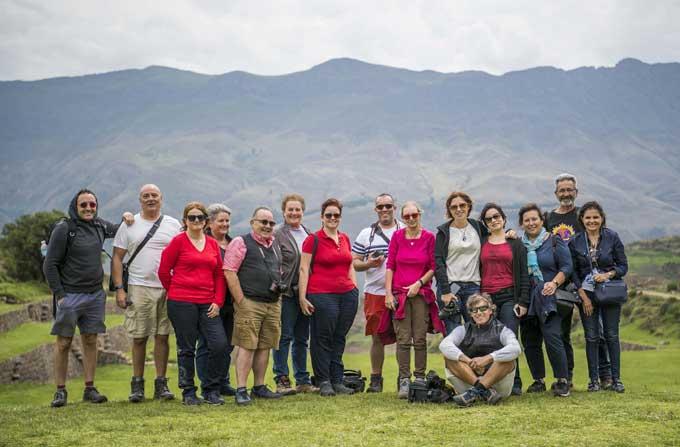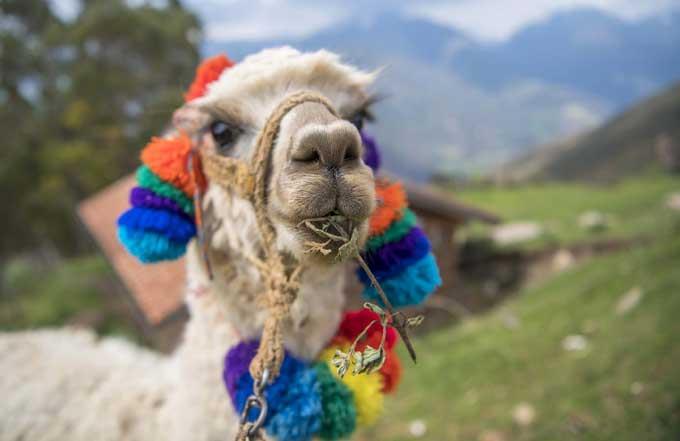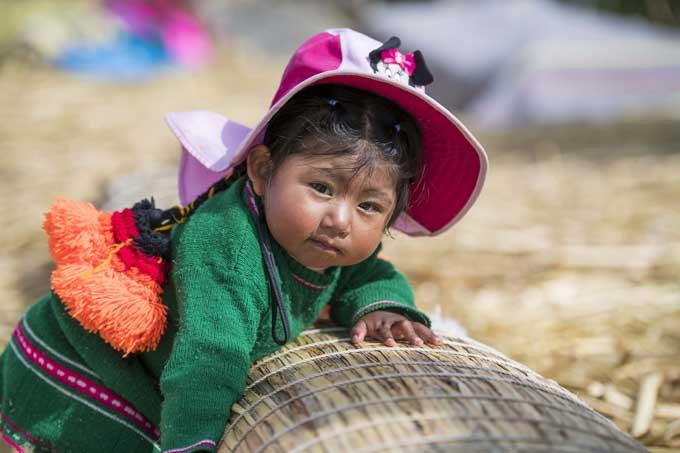Stripes of turquoise, lavender and gold blanket what has become known as the 'Rainbow Mountain', a mountain found in the Peruvian Andes. Rene Rossignaud and Faye Mallia led a brave group along the Rainbow trek up Rainbow Mountain which reaches an altitude of 5,150 metres above sea level.
Rene said: "We knew it was not going to be a walk in the park," and the group was anxious about the trek. He explains that 5,150 metres is almost as high as the Everest base camp, but during the Everest trek you had a good seven days of walking and so time to acclimatise.
The Rainbow Mountain is a different kettle of fish, with even their hotel located 2,850 metres above sea level. Driving up a 'horrible' narrow and windy road for two hours led them up to 4,600 metres, which was where the trek started. The trek itself takes four hours, each way. The elevation incline from 4,600 metres to 5,150 metres is approximately 500 metres - or a staggering 177 floors.

"The issue is that your body has no time to adjust to the high altitude and, since you are trekking, your heart is racing and you need to fight the lack of air and a massive migraine," Rene explains.
"The van picked us up at 4 am. One of our group had spent the night on Google reading about this trek, and the first thing he said at 4 in the morning was: 'Guys: you know 17 people have died trying to climb this mountain in the past 18 months'." However, he describes the summit as being 'like a dream' and said they were lucky to see the actual colours and formations of the mountains.
Apparently, the trick to combat altitude sickness is cocoa leaves, Rene tells me, although he says it leaves a horrible taste and even numbs your mouth.
The group's Peruvian experience actually began from Lima which, although a super modern city, 'has its charm'. Lima is canvassed with graffiti art popping out from its walls.

The group even took a plane ride over the high desert of southern Peru to see the world-famous Nazca lines - a collection of enormous geoglyphs carved into the desert's surface which are believed to have been the work of Aliens many years ago.
Some of the geoglyphs depict animals, objects or compact shapes, while others are only simplistic lines. Often, the composition of a geoglyph cannot be fully realised at ground level and it is only when one is high enough in the air that the shapes of some of the designs are discernible.
Rene describes the short plane ride as 'insane', saying that it is, in fact, called 'the vomit plane' for obvious reasons.
The pilot manoeuvred the plane to 45° to provide a clear vision of the Nazca lines below. Even Rene himself, an adventurer by nature, described the ride as 'petrifying'.
Cusco, a massive village on top of the mountains at 3,100 metres above sea level and known as 'the belly button of the world', was the next item on their agenda. The undisputed archaeological capital of the Americas, Cusco is the continent's oldest continuously inhabited city and the gateway to Machu Picchu and can be reached by a short plane ride from Lima.

Speaking about Machu Picchu, a trip to Peru would not be complete without a visit to this Incan city surrounded by temples, terraces and water channels, built on a mountain-top. A three-hour long train journey took the group to their destination, where they spent the night in a tiny village below Machu Picchu.
The next day they had a 30-minute bus ride up the mountain, followed by a short trek to the site itself. Machu Picchu is set at around 2,800 meters which, Rene says "was not too bad, although climbing the many steps up was not easy and the rain didn't help."
Rene describes Machu Picchu as being 'like a dream', and says it is just another one ticked off the bucket list and somewhere that everyone should visit before they are too old.

His photos seem to feature a lot of the locals, so I asked him about his experience with the Peruvians. Having said thatSaying they were very nice and honest, Rene mentioned the fact that, every time he took a photograph of them, they asked him for money.
He describes this as being 'very sad' because it really shows how local traditions have been ruined by tourism. "It's become about the money, not the experience," he said.
Rene and Faye organise these magical trips three times a year and this year they have Iceland, Japan, Sri Lanka and Vietnam on the list.